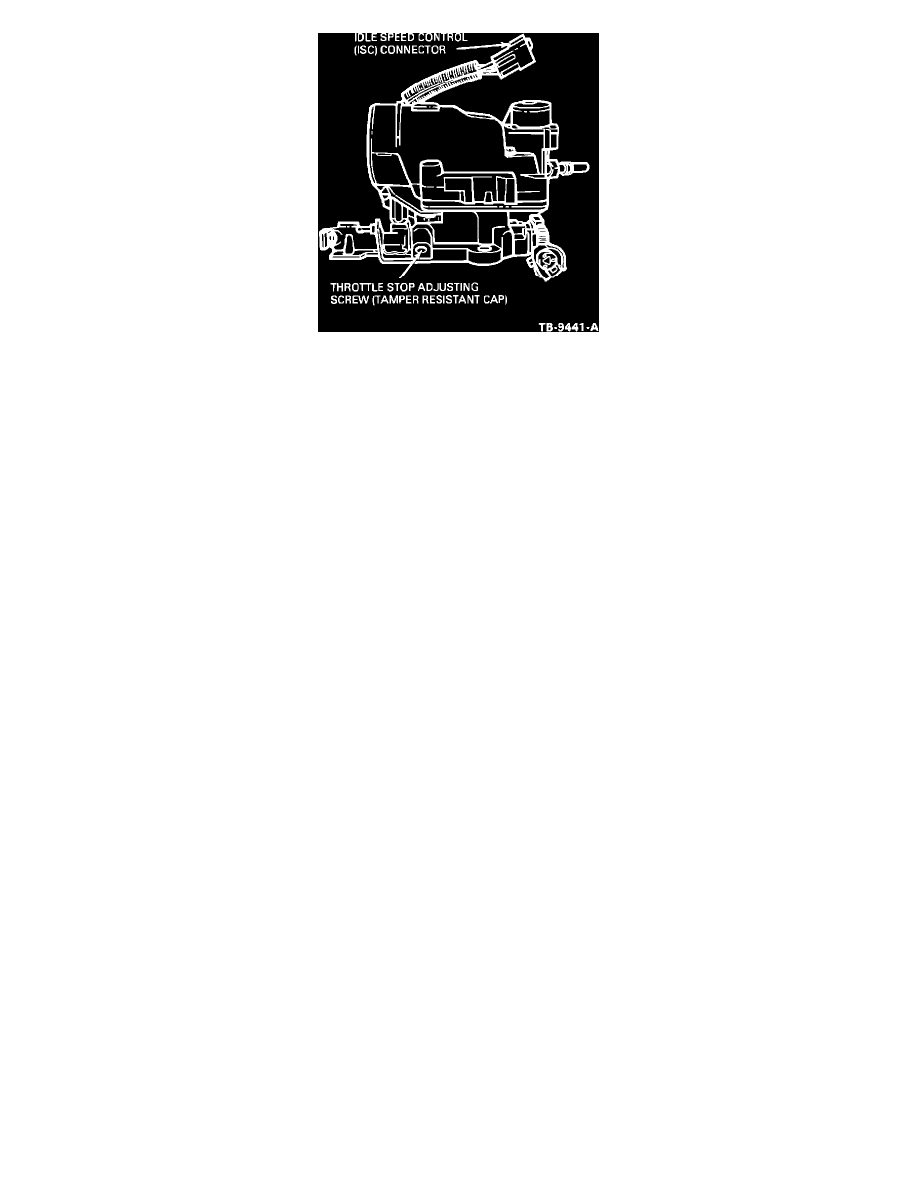Taurus L4-153 2.5L HSC (1986)

FIGURE 22
Turn ignition key to "RUN" position. DO NOT START ENGINE. The ISC plunger will retract in 5-15 seconds. If ISC plunger does not retract,
refer to Engine/Emission Diagnosis Manual, Volume H, Section 16.
Return the ignition key to the "OFF" position, wait 10-15 seconds, then remove jumper wire and disconnect the ISC motor from the wire harness,
Figure 22.
5.
Check if throttle adjustment screw (hard stop) is causing high engine idle by holding throttle plate open. If it is, hard stop screw must be adjusted,
(see following - performing hard stop adjustment). RELEARN IDLE (Step 8). If symptom is corrected, stop here. If hard stop was set properly, go
to Step 6.
PERFORMING HARD STOP ADJUSTMENT
Remove throttle body from vehicle. Using a small punch, remove welch plug covering hard stop adjusting screw, Figure 22. Replace screw if loose.
Reinstall throttle body on vehicle. Leave ISC motor disconnected from wire harness.
Start engine and let idle until engine is at operating temperature. All accessories should be "OFF". Set idle RPM by turning hard stop adjusting screw
(650/675 RPM in gear-ATX and 725/750 RPM in neutral-MTX). Replace welch plug and reconnect the ISC motor to wire harness, Figure 22.
6.
Check for contact between idle tracking switch (ITS) and throttle lever. If contact is present, go to Step 7. If contact is not present, it is possible
that the ITS switch indicates tracking at all times and returns to the full-retracted position as engine RPM is increased. Replace ISC motor.
RELEARN IDLE (Step 8). If symptom is corrected, stop here.
7.
Make sure throttle position sensor (TP) is operating properly. This check requires access to voltage between EEC pins 47(+) and 46(-) using a
monitor box or a break-out box.
a.
With key "ON" and engine "OFF" monitor the TP voltage. Voltage should be about 1 volt at closed throttle and should increase to about 4.5
volts at full throttle. Cycle throttle slowly through its full range of operation. If signal is not acceptable, the TP should be replaced and then
proceed to Step 8. If signal is acceptable, idle engine at normal operation temperature, monitor TP voltage. Voltage should be steady at about
0.9 volts. Wiggle ISC motor wiring and tap the TP lightly with a screwdriver handle. If voltage and RPM are steady, go to Step 8. If voltage
is unsteady or idle RPM becomes erratic, replace the TP and then proceed to Step 8.
CAUTION: If battery or EEC processor has been disconnected for any reason, or vehicle has been "jump started", it is necessary for vehicle to
relearn idle.
8.
Relearn proper idle as follows:
a.
Set parking brake and block wheels.
b.
If vehicle is equipped with automatic brake release, disconnect vacuum hose and plug it.
c.
Bring engine to normal operating temperature with accessories off.
NOTE:
Only a tachometer is needed. Make sure there are no vacuum leaks.
d.
Engage the transmission in Drive (ATX) or Neutral (MTX) and idle engine for 120 seconds. Idle RPM should return to specification (700
RPM-ATX or 800 RPM-MTX).
e.
Lightly depress and release the accelerator. The engine RPM should return to specification. If the RPM remains high, repeat Step 8. If engine
